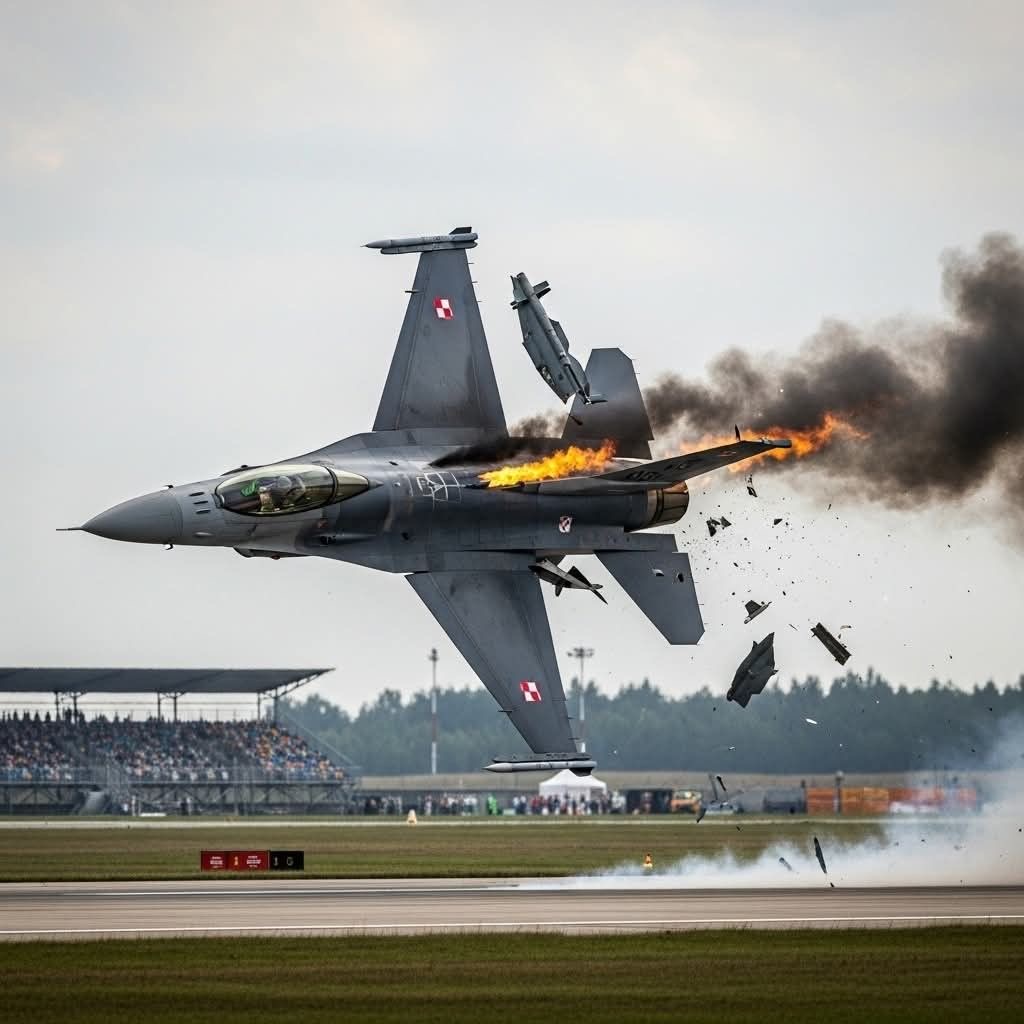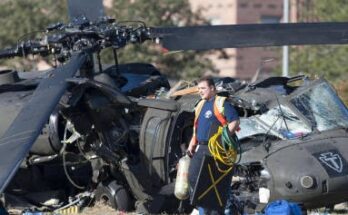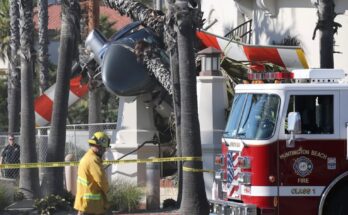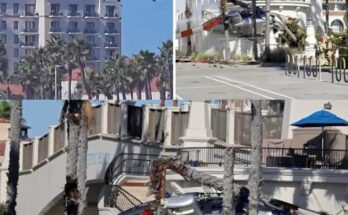
Based on the image, which appears to show a dramatic scene involving a military aircraft, here’s an analysis of the key elements:
Aircraft Identification and Context
The aircraft is a General Dynamics F-16 Fighting Falcon, recognizable by its distinct shape, single engine, and large bubble canopy. The Polish flag (red and white) on the vertical stabilizer and under the wing indicates this is an F-16 operated by the Polish Air Force.
The context suggests an air show or aviation display, evidenced by:
• The grandstand full of spectators visible on the left.
• The clear markings on the runway (e.g., “10” at the bottom center-left).
• The low-altitude, high-energy maneuver, which is typical of such performances.
The Apparent Incident
The image captures a moment of what appears to be a catastrophic engine failure or a mid-air breakup of some component:
• Fire and Smoke: Intense flames are visible exiting the rear of the aircraft’s fuselage, likely from the engine nozzle area or an adjacent section. This is accompanied by a dense, dark column of smoke, indicating a significant fire involving fuel, oil, or burned composite materials.
• Debris: Numerous pieces of debris are shown separating from the aircraft’s rear section and falling toward the ground. These fragments appear to be parts of the airframe, perhaps the engine cowling or the rear fuselage structure.
• Maneuver: The aircraft is captured in a high-angle-of-attack (nose-up) posture, suggesting it might be in a vertical climb, a steep turn, or possibly just after initiating an emergency pull-up maneuver.
• Pilot Status: The pilot appears to be in the cockpit, visible under the canopy. The image doesn’t definitively show if they are initiating an ejection sequence, but given the severity of the damage, this would be the immediate protocol.
Note: While the image is dramatic, it is a single moment in time. Without further information, we can’t confirm the exact cause (e.g., foreign object ingestion, structural fatigue, or a mechanical failure), the ultimate outcome of the incident, or the identity of the pilot. Incidents like this are extremely rare, especially at air shows, but when they do happen, the priority is always the safe ejection of the pilot.


